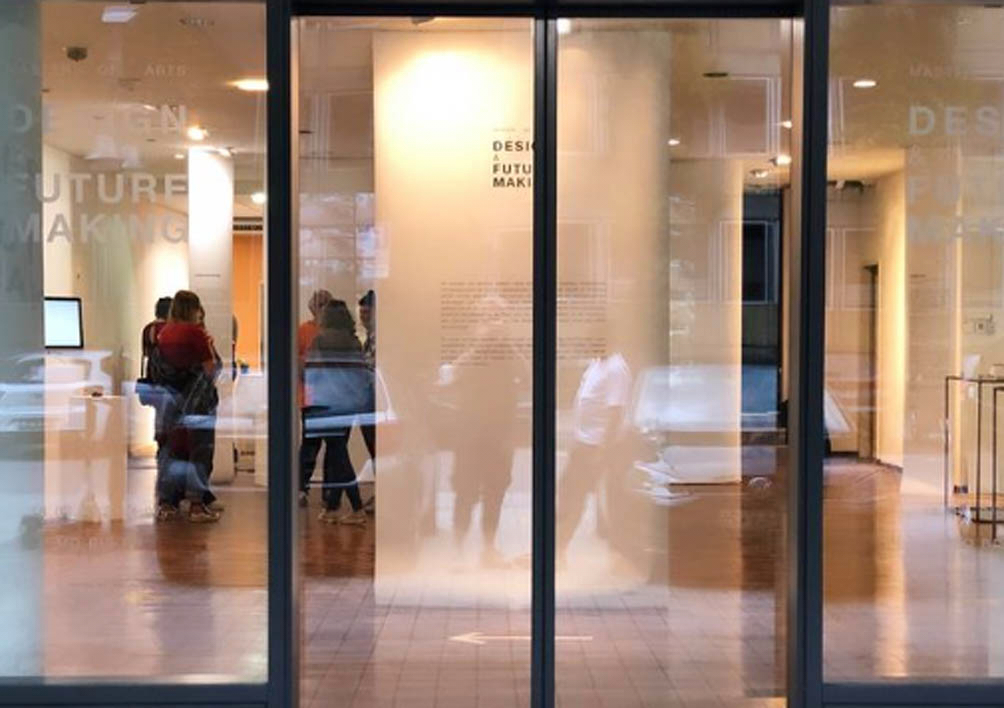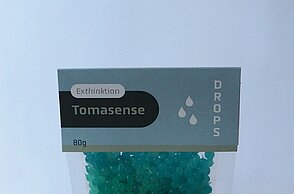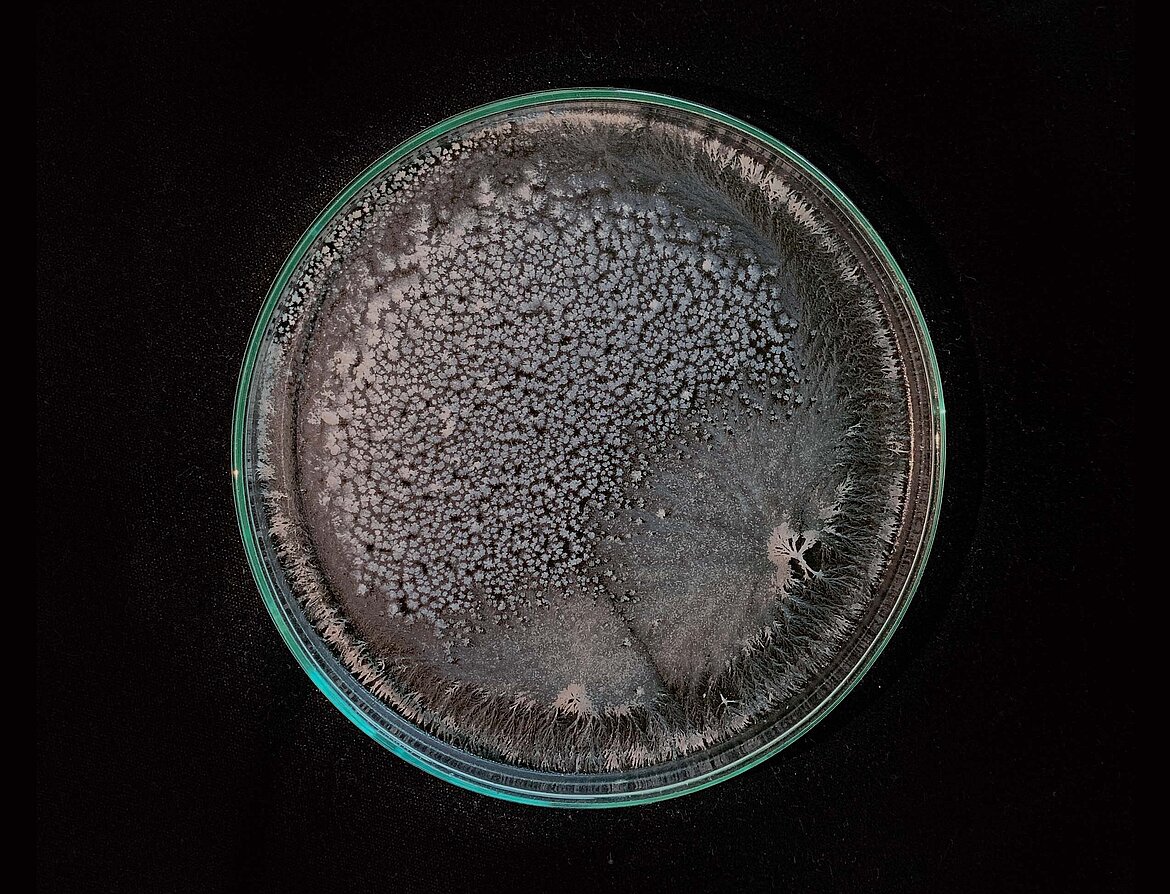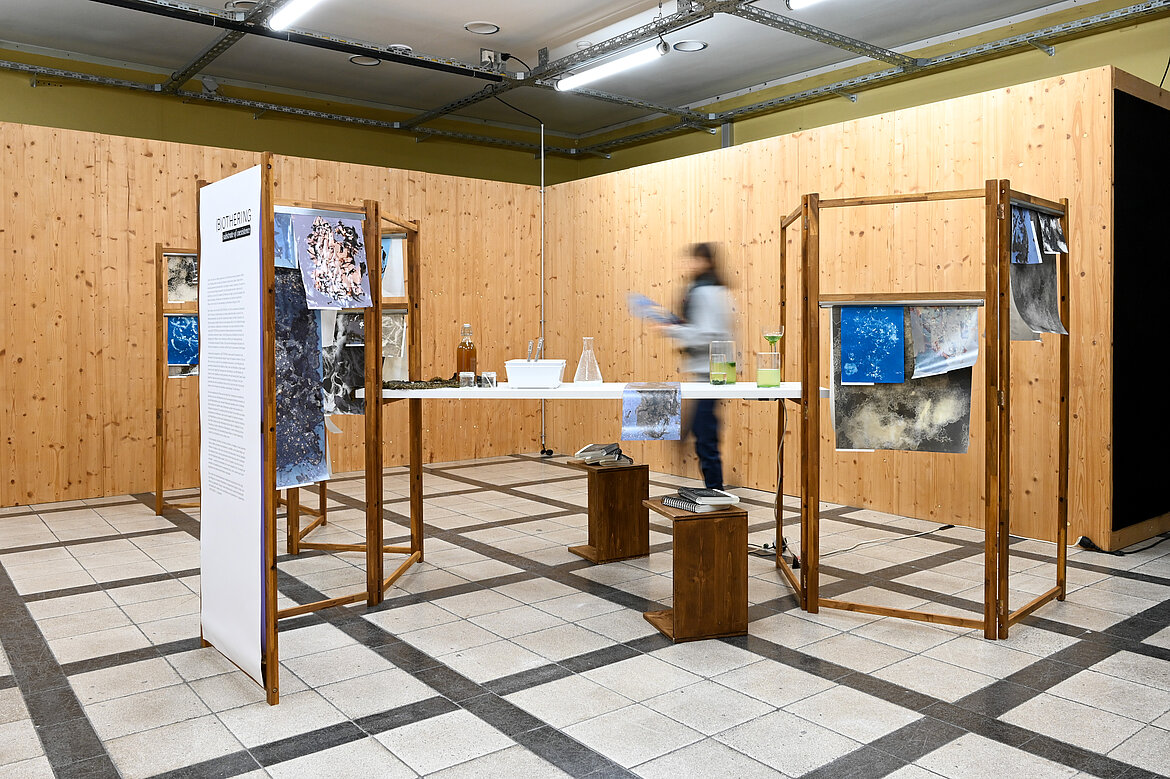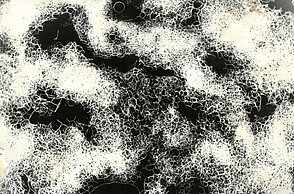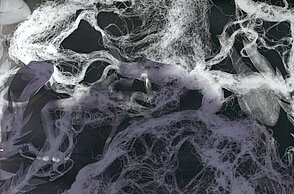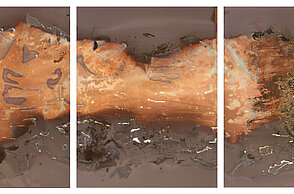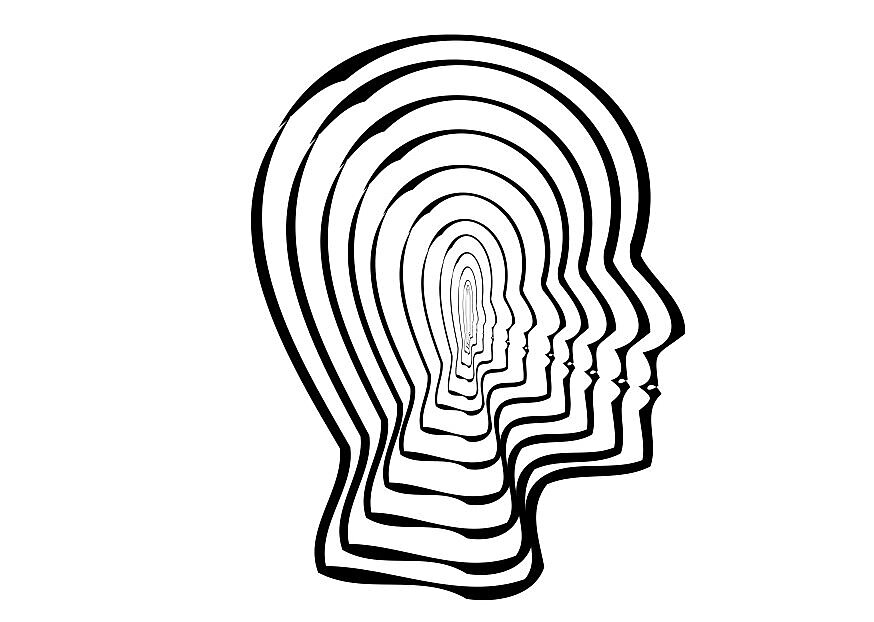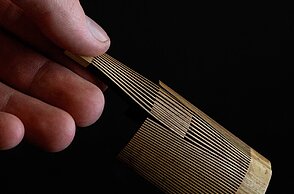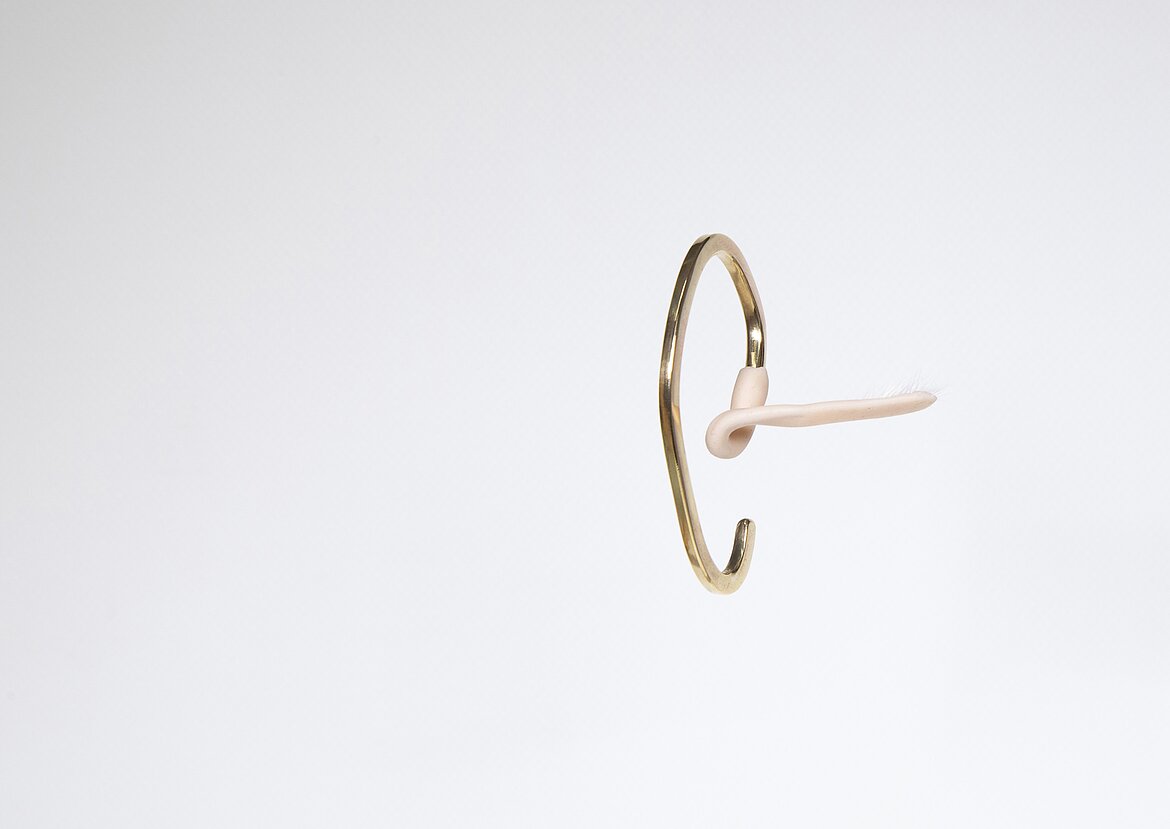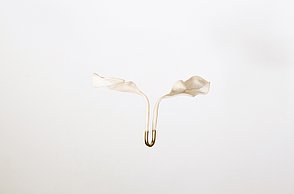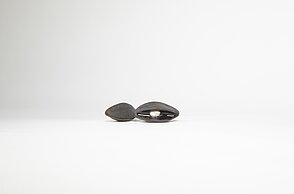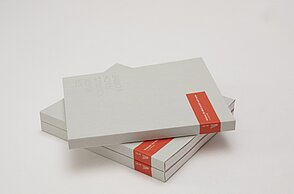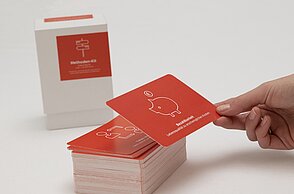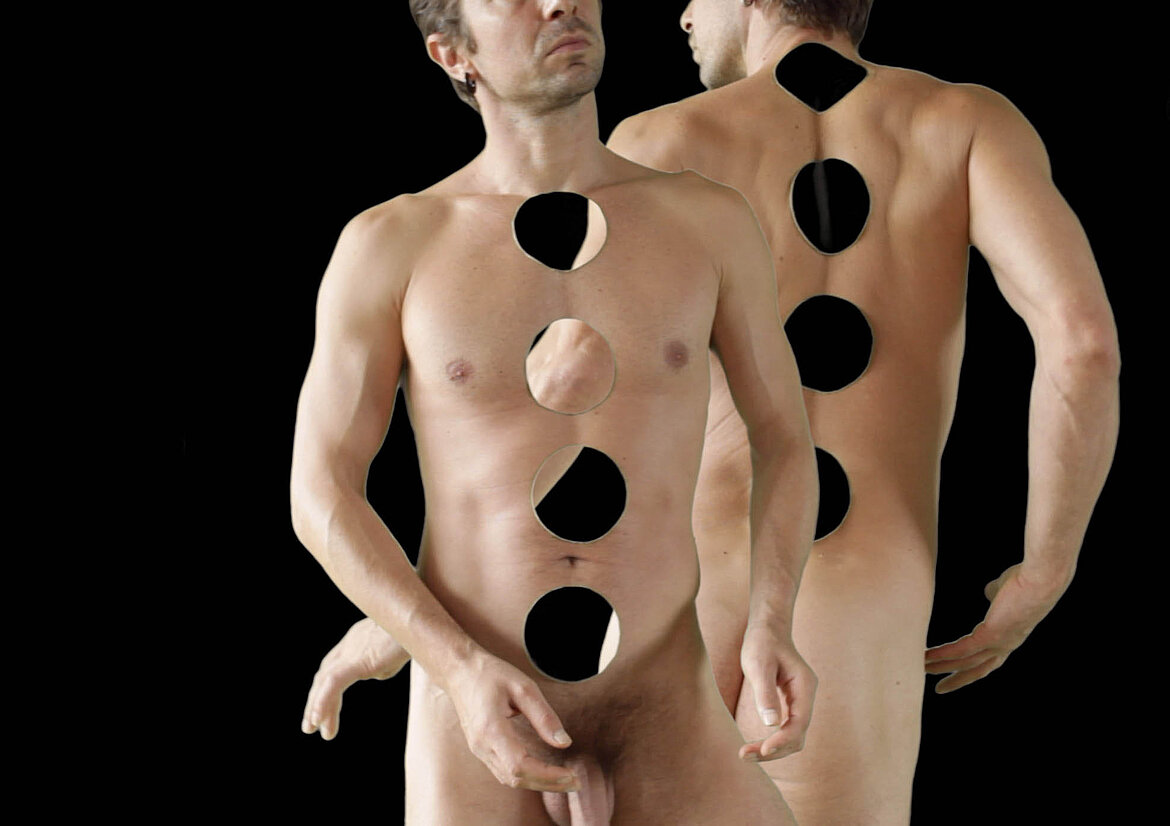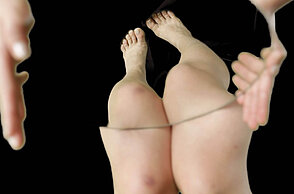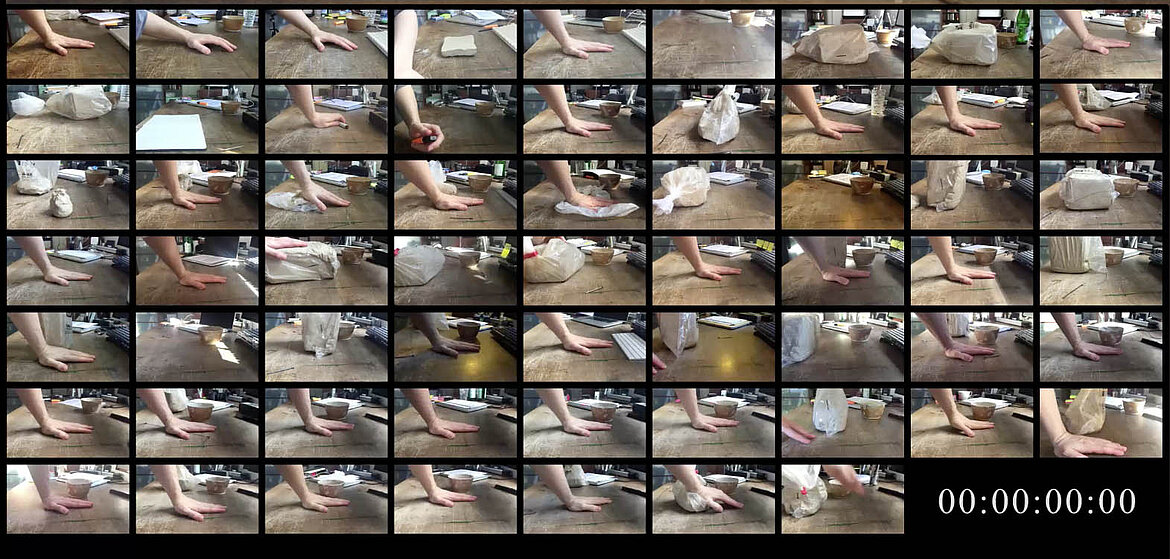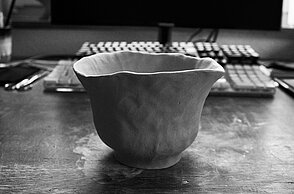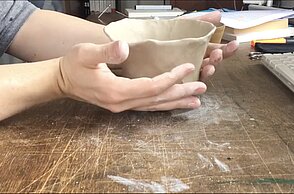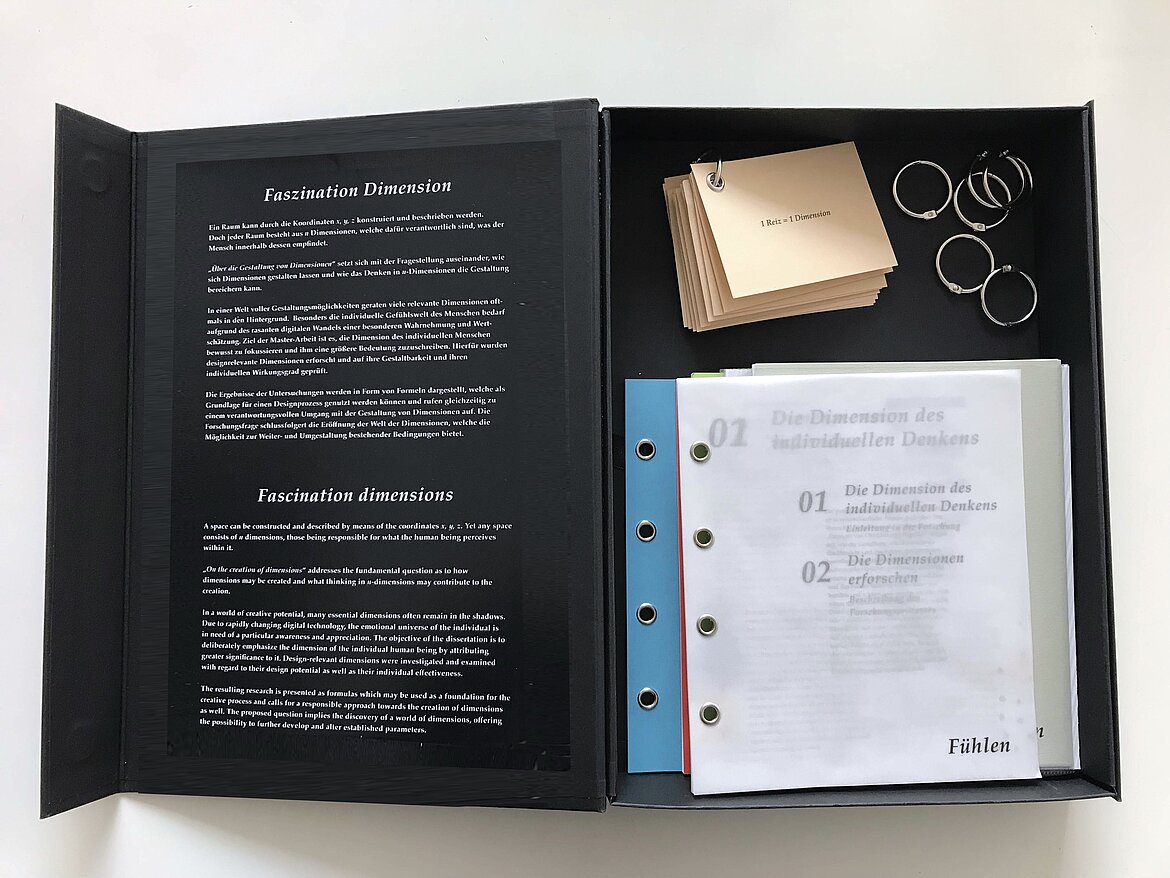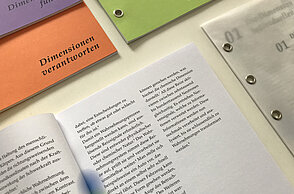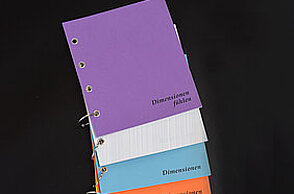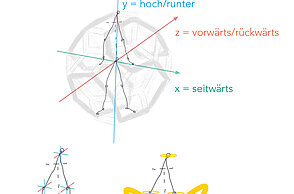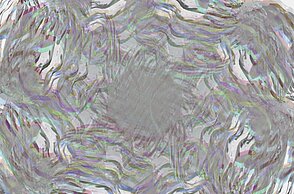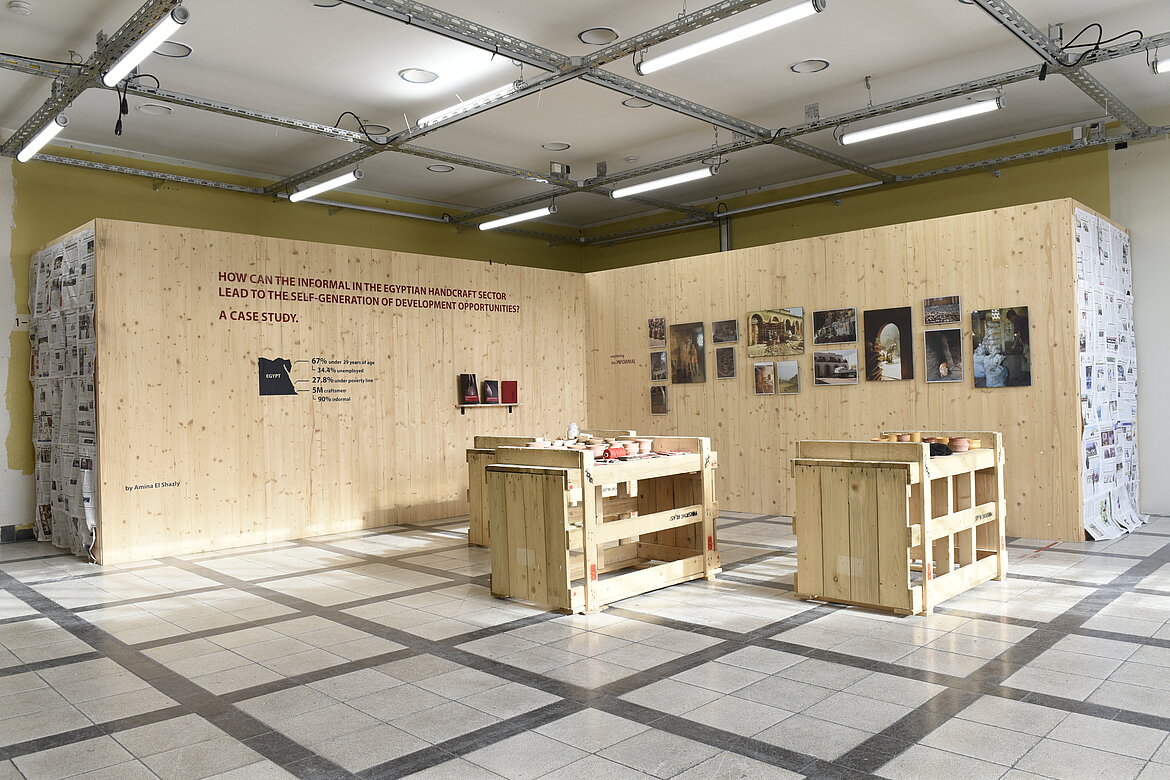Sabrina Bündgens "Exthinktion"
Conventional agriculture today can be seen as the opposite of sustainability: in- fertile land, exacerbating climate change, and the decimation of biodiversity are only some of its implications. However, consumers of agricultural produce have an enormous impact on its production and thus resulting effects on humans and the environment. The proper handling of this impact could minimize and also reverse the aforementioned effects, but consumers commonly lack awareness of and interest in their choices and their im- plications. This work explores the causes of this circumstance and aims to develop measures to tackle these. Therefore, a tho- rough literature review, as well as survey and experimental research, is conducted to understand these behavioral patterns and elaborate approaches to increase the awareness of consumers.
Chun Tong "Coevolution 4.0: Borderesonance"
"Why should our bodies end at the skin, or include at best other beings encapsulated by skin?" (1991) Donna Haraway says in A Cyborg Manifesto.
In my thesis work, I explored the relationship between skin derivatives and body excretions, and body boundaries. A series of interdisciplinary material experiments were conducted based on hair, nails, and sweat. What are the potential applications of these materials? If they participate as materials in the construction of our environment, do our bodies extend outward? If they are designed and then used for body decoration, in a sense we can be seen as a kind of cyborg, a combination of "I" and "me." What is the emotional value of jewelry made of hair that is worn back on the body? I have developed two new terms, "humaterial" and "Wenschen," which address the possibilities of using human materials in design. I discuss the coevolution of the human body, objects, and the environment under the semantics of "future making."
Anthea Oestreicher "(B)OTHERING – substrate of coexistence"
(B)OTHERING is the disturbance of the familiar through the encounter with beings in their otherness. It is through this contrast that the familiar becomes apparent and thus can itself become other again. Disturbances by their nature initiate potential for action and enable unimagined transformation. Engaging with otherness and mediating the substrate of coexistences opens up space for collaborative form-finding. Through obser- vation and recording in disciplines ranging from the natural sciences to the humanities, the co-becoming of distinct entities is mapped and processed in glossary form. »Self- prints«, photograms, images on light-sensitive substances and living artifacts convey the- se sensitive findings, chronicling interplay, inter- and intra-action. The resulting artifacts, created through the actors‘ sympoiesis, illustrate new ways of troubling paradigms, of critically positioning oneself, and testing design in its intermediary role between science and society – to grasp it as a reflection on the familiar in the unknown – (B)OTHERING.
Kevin German "fff...(...)(...)(fff...(...)(...)(fff...(...)(...)(...))) ?"
When Albert Camus states the principle „[...] the way of acting of a honest person must be determined by what he considers to be true [...]“ [6, S. 7]1, then it is clear that an honest person needs truths as objective anchors. But then the question arises, for this person, where these anchors can be found. In the search for these, various disciplines, from neurobiology to systems theory to language, were traversed in order to uncover possible objective anchors. In the end, none were found in this search; on the contrary, the belief in them was even repelled. But instead, many valuable insights were obtained, all of which can be linked to a dizzying term that eventually even led from absolute freedom and responsibility to the meaning of life.
Joshua Burghardt "the invasive identity of bamboo"
The bamboo cane is considered one of the strongest, lightest and most efficient structures in the world. Neverthe- less, due to its `non-standardizable’ form, it is shunned by industrial processing. This still leads to a stigmatization of the cane in western society.
The aim of this thesis is to work out new potentials of bamboo cane utilization with the help of laser cutting. For this purpose, laser experiments with the bamboo cane were carried out in addition to the optimization of the laser cutter. Based on the findings, a processing technique could be designed that combines laser processing with a craftsmanship process and thus enables a material-appropriate and flexible processing of the bamboo cane.
Nina Hanselmann "Symbeyond Realities"
Die Prozesse einer zunehmenden Technologisierung der Welt und der natürlichen Evolution verlaufen in verschiedenen Tempora. Während immer neue Erfindungen und Systeme, Ideen und Maschinen unseren Alltag beeinflussen, verläuft die natürliche Evolution nicht schneller als zuvor. Diese Asynchronität der beiden Prozesse bedarf einer Substitution fehlender Sinne für eine „technologische Welt“. Symbeyonden nehmen sich dieses sensuellen Defizits an und ersetzen, erweitern oder ergänzen fehlende Sinne. Max Scheler beschreibt in seinem gleichnamigen Buch „Die Stellung des Menschen im Kosmos“ und theoretisiert den Übergang der Menschwerdung anhand eigener Theorien. Für ihn ist der Mensch dann Mensch geworden, als er sich die 4. der 4 Sphären seines Modells des „Überräumlichen und Überzeitlichen“, für sich erschloss. Die Fähigkeit, in die Zukunft zu planen, sei allein dem Menschen eigen. Scheler stellt zudem fest, der Mensch habe als einziges organisches Lebewesen einen Geist und sei daher nicht mehr trieb- und umweltgebunden, sondern frei und weltoffen.
Mit der Erschließung der „überzeitlichen und überräumlichen“ 4. Sphäre spannt sich für den Menschen eine Weite auf, die er nicht zu greifen vermag. Die Erfindung von Maschinen, Computern und anderer Technologie erweitert diese Sphäre zunehmend und verweigert dem Menschen den Zutritt. Dieses „unbekannte Unwissen“, „Welche Folgen/Möglichkeiten hat die Technologie?“, findet in der Einordnung der Symbeyonden ebenso seinen Platz, wie die „sensuellen Defizite“. Letztere bezeichnen ein Möglichkeitsspektrum, dass ein Mensch durch Technologie zwar erahnen, jedoch nicht mit seinen eigenen Sinnen begreifen kann. Beispiele hierfür wären die WLAN-Strahlung oder die Erderwärmung. Die Symbeyonden sollen zur physischen Erfassung der „sensuellen Defizite“ beitragen und einen spekulativen Möglichkeitsraum aufspannen.
Lisa Grocholski "Wohnen: Ein Blick zurück nach vorne"
The present work entitled "Wohnen: Ein Blick zurück nach vorne" (Living: A look back forward) addresses the question of how housing in urban neighborhoods, in particular the research neighborhood Au in Pforzheim, can be improved in the future. The focus is on the development of a common language for all actors involved as well as possible recom- mendations for action for the research quarter. Since the Au neighborhood not only has numerous problems, but also potential that has not yet been exploited, it is particularly suitable as a research neighborhood. Besides the basics of housing, this thesis deals in- tensively with the history, the present situation and the future of housing. Furthermore, the research neighborhood, its housing market and the neighborhood residents are exam- ined. In order to develop an appropriate language for the inter-disciplinary dialogue, em- pirical research will be conducted in addition to the literature review. The first drafts will be tested, adapted and improved in a participatory way in the conducted workshops, be- fore the concept will be transformed into a method-kit in the practical part of the thesis. Furthermore, possible strategies for action and methodological practice recommendations for the research quarter are derived from the empirical research. Thus, this thesis does not provide a pre-defined solution, but a self-empowering, flexible strategy based on own empirical values. „[...] (Since) the way people live together and also, for example, the way we work and where we work [...] are constantly (changing)”, as expert E17 empha- sizes in the interview, the thesis encourages a constant further development and adapta- tion of the neighborhood to the needs of the residents. As a tool, it provides an extensive spectrum of participatory and flexible methods and strategies that can also be helpful for other urban neighborhoods. Some of the jointly developed ideas that emerged during the workshop are already having an impact from the research neighborhood into the city of Pforzheim, thus improving the quality of life of the residents.
Vanessa Ohlhausen "Tantra"
The concept of man and woman is viewed objectively in Tantrism. It is assumed that man, as an integral part of the universe, unites the male and female principle. Western thinking is strongly influenced by binary-categorical ideas. A person is defined through sexuality and can thus be subjected to a number of social regulations. The thesis project Tantra recognizes the binary as objective information in a relative field. Thereby the human body is seen as a node in a material-semiotic field. Vanessa Ohlhausen cordially invites you to a kind of drag performance in which the illusion of a fixed idea of bodies is challenged.
Benjamin Wengert "Design for Nothing"
The plenitude we long for in our lifetime shapes us and our actions. Through our actions we create artifacts, our artifacts create worlds. The action is not free, but is subjected by programs. Instead of divergent worlds, where the new unfolds, convergent worlds emerge, where the new fades away. The author eludes the status quo and reports a desynchronized* experience of a creating process and its impact.
*(seemingly) + ineffectual, purposeless, conventional, futile, inconclusive, grotesque, ignorant, absurd, inadequate, thankless, rash.
Jessica Giuliano "Über die Gestaltung von Dimensionen"
The concept of dimension is often associated in social usage as an extension of quantities, together with the concept of space, and defined by the x,y and z axes. However, how humans perceive an architectural space is influenced by various phenomena that exist within a space. For example, human perception depends on the temperature within a space. If this space is perceived as warm, this occurs due to the dimension of warmth.
These phenomena can also be transferred to social space, which has the consequence that every living space contains far more than just three dimensions and leads to the thesis that countless dimensions exist and that we thus live in an n-dimensional world. The master thesis "On the Shaping of Dimensions" deals with the shaping of n-dimensional habitats and explores the different factors by which they are shaped. In order to understand which dimensions surround us, both the different phenomena and the associated dimensions are consciously considered, split and shifted in order to explore possible connections as well as dependencies. The aim is to find out how the different dimensions are perceived and whether thinking in dimensions can create a new awareness for shaping the future.
Alexandra Mavlutova "Align"
The A L I G N project is moving between two worlds. The academic and the artistic. Hereby, within the framework of the Design and Future (of) Making course, a bridge is built. It is a contribution to the diversity of rela- tionships of man and space. The differences between artistic and design-related research are used here as synthesizing tools to create different perspectives. The theoretical and the practical parts of A L I G N lead to a „realm“, in which statements on the one hand hover artistically resonating in the air and on the other hand are substantiated according to scientific criteria. Both approaches work together in this „realm“ and complement each other.
For this purpose, auditory kinaesthetic installations based on feedback were crea- ted in the „real“ physical space. Preliminary stages serve as an exemplary basis for the later staging of the installation. The goal is a continuous moving and selfobserving. If a movement takes place, it refers to a „covered“ space, physical or mental. It does not matter whether a hand is moved or a thought jumps. The difficulty here is to break through our individually limited world of thoughts and to expand it.
Amina El Shazly "How can the informal in the egyptian handcraft sector lead to the self generation of development opportunities?"
Egypt has a lot of unforeseen and unleashed skills that provide good opportunities for advancement in development. Craftsmanship is an important sector in Egypt; the handcraft sector is the second largest in Egypt that comes after agriculture, however it has been sidelined during the past 3 decades. About 5 million craftsmen work in this sector and it is estimated that about 90% of sector works informally. There are lots of craftsmen that are not well recognized and sometimes not even integrated in the market diversity. According to the conducted surveys and interviews this could be due to many factors, such as not meeting consumers’ and markets’ expectation in aesthetics, quality or even bad communication channels. Although they are skillful, yet they lack the needed exposure to new designs, innovations, design methods and strategies that are needed for the advancement of their crafts. The informal sector opens doors for exploration, experimentation, trials and errors, which fits perfectly with the creative sector. Through field research and market observation most of the craftsmen in Egypt are working informally however not using this philosophy for the development in their field. They are afraid of taking risks and applying change to what they have been doing for years and years; hence stagnating in the market and even losing their stance in the market.
The thesis is answering the question:” How can the informal in the handcraft sector lead to the self-generation of development opportunities?”. The results were built upon the case study of pottery making in Egypt. The objective is to find opportunities from within the sector and to explore how to implement certain strategies, to promote self-generated opportunities that will be familiar and acceptable to the craftsmen as well as co-creating with them. The research illustrates the positive characteristic of the informal alongside the importance of craftsmanship and the challenges they face, which has been reflected through the implementation of three mini projects, tackling the opportunities of development and self-generation in the handcraft sector in Egypt by focusing on the lost values of the crafts and regaining the status in the market again. A proposed program for practical implementation is developed based on the study and the practical projects findings.

